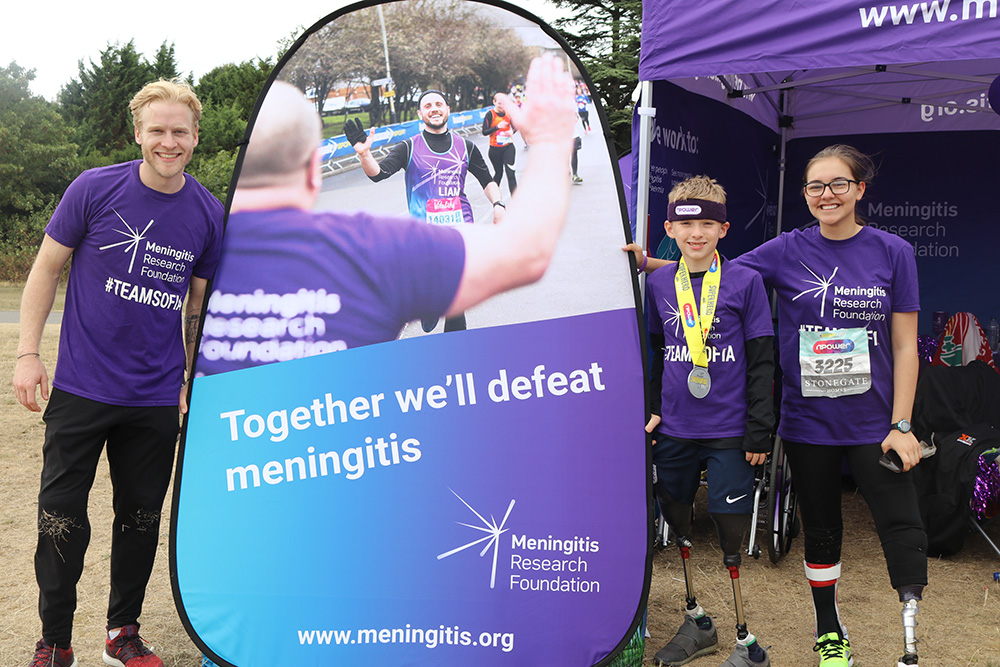Unfortunately, prosthetics do have usage and monetary limitations. Overuse of a prosthetic can cause the deterioration of the skin where the prosthetic is attached. Prosthetics often take months to produce and there is a limit to their functionality. Furthermore, the surgery required to fit prosthetics comes with its own set of risks.

Celebrity patron Jonnie Peacock with MRF young Ambassador Sofia Crockatt and Cieran Kelso, all of whom lost limbs to meningitis, at this year’s Superhero Series triathlon.
However, technology continues to make great strides forward. We’ve rounded up just a few of the ways that prosthetic limbs are improving year on year.
Prosthetics that can sense
Scientists have created artificial nerves that could be used to restore the sense of touch – including texture, pressure and heat. The artificial nerves, which can be produced in bulk inexpensively, are able to be connected to human bodies as they are made of an organic pliable material, similar to human nerves. These nerves integrated into artificial limbs could give wearers a better ability to use their prosthetics, as well as increase the functions the limbs can perform. For more information, please visit this link
3D printed prosthetics
3D printing can quickly and cheaply create tailored items for industries from aeronautical to jewellery making. This technology is now being utilised in the medical market to create prosthetic limbs. There are many advantages to 3D printing artificial limbs; they are lightweight, cheap and fast to produce, and designs can be enlarged and reprinted when wearers grow. These advantages are particularly beneficial as many children dislike traditional, more expensive, prosthetics as they consider them cumbersome and require a new artificial limb every couple of years due to growth. Although these advantages come at the cost of sophistication of design and sometimes usability, 3D printed prosthetics could make a huge difference to people across the world. For more information, please visit this link.
Special coating to prevent infection
Serious bacterial infection can be a risk when undergoing joint replacement surgery. Swelling and redness are common after this type of surgery but, in some people, low-grade chronic infections can last for months - causing bone loss which may lead to implant loosening, and ultimately the failure of the new prosthesis. In late 2016, scientists at Johns Hopkins University demonstrated that a “novel coating they made with antibiotic-releasing nanofibers” could help prevent at least some of these infections, making this kind of surgery a far safer option. Click here to find out more.
Each year brings new advancements in the field of prosthetics and, we hope, greater accessibility. Many of our Ambassadors have suffered limb loss due to meningitis and septicaemia, and are great examples of how fulfilling life can continue to be even after amputation.
On Friday 26th October, Meningitis Research Foundation are hosting our annual ‘Pushing the Boundaries’ event, a free support day designed for families with children aged 0-16 years who have lost limbs due to meningitis and septicaemia.
If you have suffered limb loss due to meningitis and septicaemia and would like someone to talk to, please don’t hesitate to reach out to our professional helpline team: